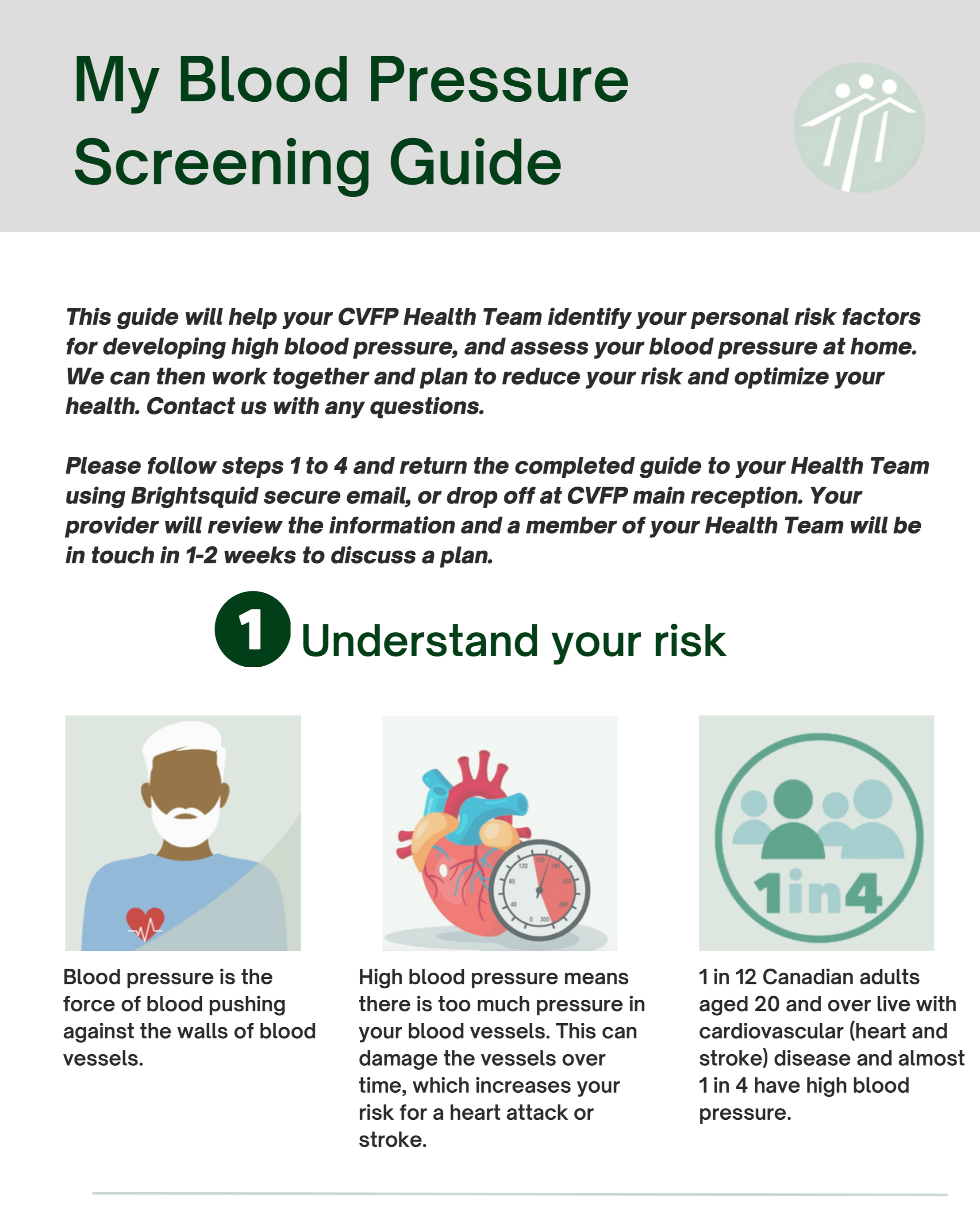A CVFP Health Quality Improvement Initiative
Improving Screening, Treatment & Management of Hypertension
The Challenge
Suboptimal blood pressure is the leading global risk for death and is the second leading Canadian risk. In Canada, more than 40,000 people die each year from cardiovascular diseases (CVD) related to suboptimal blood pressure. Much of the disease associated with suboptimal blood pressure is in those with clinical hypertension.
While most Canadians with known hypertension are treated, large numbers with hypertension are not diagnosed or if treated are not controlled. Canada currently has a high national rate of hypertension control, however, it is declining. As well, it has not adopted global best practices for managing hypertension.
What is Hypertension?
Hypertension is the medical term used to describe blood pressure that is higher than normal.
Blood pressure is the force of the blood pumped from the heart against the blood vessels. This force makes blood flow possible, delivering nutrients and oxygen to organs and tissues throughout the body.
Hypertension occurs when there is too much pressure in your blood vessels. This can damage your blood vessels and cause health problems. Anyone can develop high blood pressure, but it becomes more common as you get older.
The CVFP Initiative
Under the leadership of our Medical Director, Dr. Janet Reynolds, and in partnership with Dr. Norm Campbell, a hypertension expert with experience implementing global best practices, plus other clinic physicians, CVFP has launched a large-scale hypertension project.
The CVFP Hypertension Project aims to adopt global best practices to optimize hypertension control. It is hoped this project can be used to spread and scale global best practices to other clinics, ultimately to prevent Cardiovascular Disease (CVD) death and disability.
How Can You Take Action?
1) Check your blood pressure at home with a blood pressure monitor (use the Blood Pressure Screening Guide linked below) or have your health care provider do it for you at your doctor’s office or pharmacy
2) Know what blood pressure readings mean for you.
3) Work with your doctor to develop a plan to control your blood pressure to help you stay healthy.




